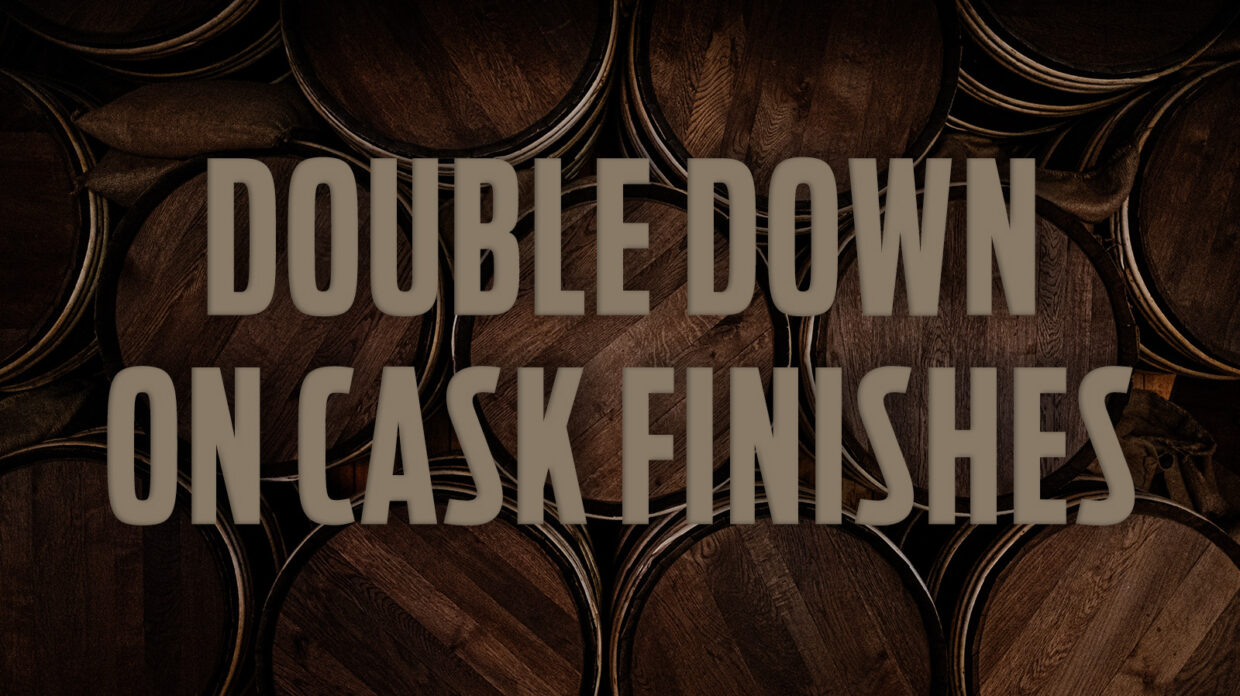
If there is a father of cask finishes in the American whiskey world, it would most likely be the late Dave Pickerell. The longtime master distiller for Maker’s Mark had been exploring finishes for years when the company that is now Beam Suntory bought the operation. “Beam soon made it clear those experimental products would not be brought to market,” says Jeff Baker, owner of Hillrock Estate Distillery. “But we were very interested. We wanted complex layers.” Pickerell joined Hillrock as master distiller, bringing his array of finishing techniques to the upstate New York operation.
Once controversial, cask-finished whiskies are now commonplace. Whether it’s a wine, beer, or other spirits cask, distillers are doubling down by applying two or more finishes to one whisky. For some, it’s a byproduct of a zealous quest for complexity. For others, it’s braggadocious showmanship. For Baker, a fan of finished single malts who believes this is a natural progression for American whiskey, it was also a bit of a nod to where the category began.
“We chose to finish our Double Cask rye with port, sauternes, and madeira because those wines were in real demand back when rye was popular, when George Washington was making it,” Baker says. “Dave believed that some of that original rye would’ve made it into those finish casks. Those flavor profiles go incredibly well.” He adds that finishes should be an accent, not overwhelming characteristics: “We don’t want our rye to taste like port.”
More than half of Hillrock Estate’s whiskeys spend time in a secondary finishing barrel. For the Solera Aged bourbon, the number of casks can be in the dozens. “All start in a new, char No. 3 American oak barrel, then into a used bourbon barrel, then into the solera system,” explains Baker. “Then two more ex-bourbon tiers, then into an oloroso sherry cask, and then into a sauternes, cabernet, or a pinot noir cask.”
double casks in the emerald isle
Expect to see more wine-cask finishes creeping into Irish whiskeys. We’re enjoying a boom in single pot still whiskeys crafted from heritage mashbills, which means “brands are going back to their roots and releasing a style of what people were drinking 100 years ago,” says Michael Egan, U.S. brand ambassador for Tyrconnell. “Soon, distilleries won’t have the aged older stuff available so they may release younger products, 4 or 5 years old, or all source from the same producer. Fortified wine cask finishes are one way to differentiate that liquid.”
Tyrconnell started cask finishes in 2007 as annual special releases for its single malts. From the first offering—three 10 year olds, each finished in madeira, port, or sherry—drinkers were hooked. In 2019, a 16 year old whiskey was treated to wine casks from Spain’s Andalusia region, initially seasoned with oloroso sherry followed by a second seasoning with moscatel wine, a unique twist on the double finish.
The time in the finishing casks varies and requires frequent check-ups to find the sweet spot. “We sample at regularly defined intervals during the initial trials to determine the best finishing duration,” says Sarah Dowling, master distiller and blender for Kilbeggan Distillery, which produces Tyrconnell. “I don’t necessarily think any time is too long in a barrel, but it depends on the spirit being finished and the character of the finishing casks. You don’t want the taste profile of one to overpower the other. It’s a delicate balance.” Likewise, cask order matters, per Baker: “Our single malt finishes first in Pedro Ximénez casks, then oloroso sherry. The reverse order didn’t taste as good.”
Experimentations don’t always turn out as expected. “Dave talked about a giant distiller who did a chardonnay finish,” recounts Baker. “It was one of the worst whiskeys he’d ever tasted. Dave was a chemical engineer, so he could articulate why that bad chemical reaction destroyed this whiskey. In addition to the art, there is a fair amount of science involved.”
Multi-finished whisky: Tracing four whiskies from start to finish

Kamiki Sakura Japanese blended malt—48% ABV, $95
First cask: Oak barrel
Second cask: Yoshino Sugi Japanese cedar cask
Third cask: Japanese cherry-wood Sakura cask

Abraham Bowman 13 year old Twice Finished American Whiskey—50% ABV, $70
First cask: New charred oak barrel (8 years, 3 months)
Second cask: Potomac Point Winery port-style wine barrel (4 years, 7 months)
Third cask: Sauternes barrel (2 months)

Hillrock Estate American Single Malt (Barrel OPX-30)—89 points, 48.2% ABV, $105
First cask: New charred oak barrel
Second cask: Hillrock bourbon barrel
Third cask: Oloroso sherry cask
Fourth cask: Pedro Ximénez sherry cask

Tyrconnell 16 year old Oloroso & Moscatel Cask-Finished single malt—92 points, 46% ABV, $100
First cask: Bourbon barrel (16 years)
Second cask: Barrel seasoned with oloroso sherry, then moscatel wine







